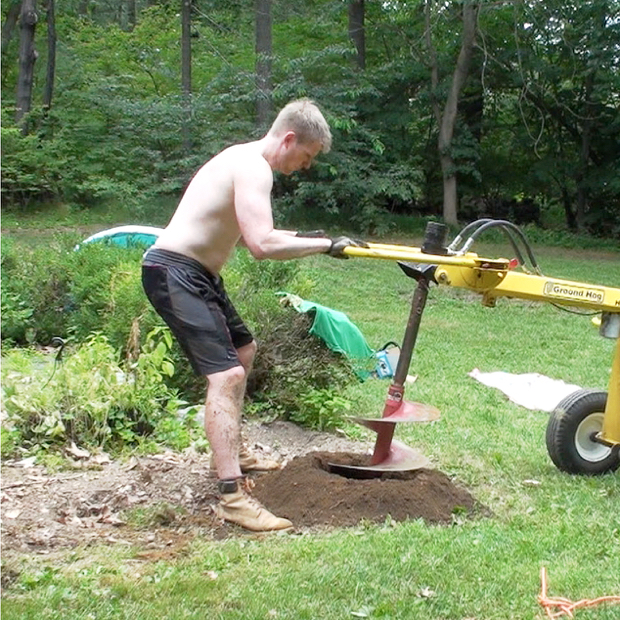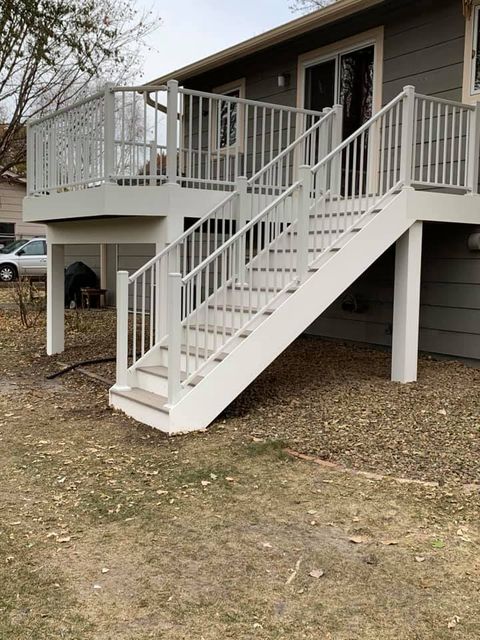Selecting the Right Deck Footings for Stability and Sturdiness
When it pertains to constructing a deck, among the most important choices you will certainly make is choosing the best grounds for security and durability. The long life and safety of your deck depend heavily on the kind of grounds you pick, as they give the essential support and security to stand up to the test of time. With a myriad of options readily available, it can be frustrating to determine which grounds are best matched for your certain requirements. In this discussion, we will discover the numerous kinds of deck footings, consider the crucial variables to consider when making a decision, and delve right into the advantages and disadvantages of various options. By the end, you will certainly have a clearer understanding of the options handy and be far better equipped to make an informed decision for your deck job.
Kinds Of Deck Grounds
There are numerous kinds of deck footings that can be used, each offering unique advantages and factors to consider. One usual kind of footing is the concrete pier footing. These grounds include a round hole loaded with concrete, which provides a strong structure for the deck blog posts. Concrete pier grounds are relatively simple to set up and offer superb security, making them a prominent choice for numerous deck tasks.
These footings are set up by screwing them right into the ground, which creates a safe and secure structure for the deck. They likewise allow for very easy change and leveling of the deck if needed.
Alternatively, some builders select precast concrete grounds. These footings are made from durable concrete and be available in different forms and dimensions to accommodate various deck styles. Precast concrete footings are convenient to install and provide a secure base for the deck framework.
Lastly, one more choice is the post-in-anchor footing system. This kind of ground involves driving a metal support right into the ground and connecting it to the deck article. It provides versatility in regards to placing the deck articles and appropriates for decks with lightweight frameworks.
When selecting the best sort of deck footing, it is necessary to think about aspects such as soil conditions, deck lots, and local building ordinance (Deck Footings). Consulting with a specialist contractor or architectural engineer can help make sure the suitable footing is chosen for a secure and steady deck
Elements to Take Into Consideration When Choosing Grounds
When choosing the ideal footings for a deck, it is important to carefully consider numerous factors such as dirt conditions, deck lots, and adherence to neighborhood building regulations. These factors play a considerable duty in guaranteeing the security and longevity of the deck framework.
The type of dirt on which the deck will certainly be built identifies the kind of grounds called for. On the other hand, decks developed on clay or expansive dirts might call for grounds that can suit the dirt's tendency to expand and agreement.
Another essential variable is the deck tons. The weight of the deck, consisting of the products used and any kind of potential online lots such as furnishings or celebrations, should be considered when choosing footings. The grounds should be developed to bear the weight of the deck and disperse it uniformly to avoid any structural concerns or failings.
Lastly, adherence to regional building ordinance is critical. Building regulations differ from area to region, and it is important to conform with the particular demands set by the neighborhood authorities. Deck Footings. These codes make certain that the deck is built securely and fulfills the essential criteria for structural integrity and load-bearing capability
Concrete Footings: Cons and pros

When used as the structure for a deck,Concrete grounds provide numerous advantages and negative aspects. On the positive side, concrete footings offer excellent security and toughness. Concrete is a strong and stiff product that can sustain hefty lots and endure numerous climate condition. It likewise has a long life expectancy, making it a reliable option for lasting usage.
An additional benefit of concrete grounds is their versatility. They can be poured into various sizes and shapes to suit different deck styles and arrangements. Concrete footings can be customized to fit the particular demands and requirements of the deck framework.
However, there are additionally some drawbacks to making use of concrete footings. One major disadvantage is the expense and labor entailed in their installment. Concrete grounds need excavation and usually require the aid of hefty machinery. This can raise the total cost of the deck project and may call for specialist aid.

Helical Piers Vs. Sonotubes: Which Is Better?
In thinking about the foundation alternatives for a deck, the comparison in between helical piers and sonotubes is vital in establishing my review here the remarkable choice. Helical piers, additionally known as screw heaps, are steel shafts with helical plates affixed to them. They are twisted right into the ground using hydraulic machinery, offering a stable and durable foundation for the deck. On the other hand, sonotubes are round kinds made of cardboard or fiber product that are filled with concrete. They are put in an opening dug into the ground and supply assistance for the deck.
When it comes to stability and sturdiness, helical piers have the upper hand. The helical plates on the piers create a solid hold with the soil, preventing any kind of activity or changing of the deck. This is especially beneficial in locations with unsteady or changing soil conditions. Sonotubes, on the various other hand, rely solely on the concrete loading for stability, which may not provide the same degree of strength and resistance.
In regards to installment, helical piers are fairly easier and faster to mount contrasted to sonotubes. The hydraulic equipment utilized to twist the piers right into the ground makes sure a effective and quick process. Sonotubes, on the various other hand, call for digging openings and putting concrete, which can be time-consuming and labor-intensive.
In addition, helical piers are a more functional choice. They can be utilized in numerous soil conditions and can be adjusted or reinforced if needed. page Sonotubes, on the other hand, might require added assistance, such as rebar, in certain soil conditions or areas with high load demands.
Picking the Right Footings for Your Deck's Dimensions
For optimum architectural stability, it is vital to carefully choose the appropriate grounds that straighten with the measurements of your deck. The measurements of your deck, including its elevation, size, and width, play a considerable role in figuring out the type and dimension of footings needed.
When choosing footings for your deck, it is very important to consider the load-bearing capability of the dirt. The weight of the deck, integrated with the weight of any kind of furnishings or people on it, puts in a substantial pressure on the footings (Deck Footings). It is important to select grounds that can appropriately sustain this weight without moving or sinking over time.
The size and form of the grounds should likewise be thought about. Larger decks with better measurements require bigger footings to offer enough stability and support. The form of the footings, whether they are round or square, relies on the design and layout of the deck. Furthermore, the depth at which the grounds are mounted ought to be determined based upon the frost line in your area to stop any kind of heaving or shifting as a result of freezing temperature levels.
Verdict
In final thought, choosing the right deck grounds is critical for ensuring stability and longevity. Aspects such as the kind of grounds, the deck's dimensions, and the pros and cons of various choices need to be taken into consideration.
These footings consist of a cylindrical hole loaded with concrete, article which gives a solid structure for the deck articles. Concrete pier grounds are relatively very easy to set up and use outstanding security, making them a prominent option for many deck tasks.
Precast concrete footings are practical to mount and give a stable base for the deck structure.
It offers versatility in terms of placing the deck posts and is suitable for decks with light-weight structures.
Concrete footings supply a number of benefits and disadvantages when made use of as the foundation for a deck.